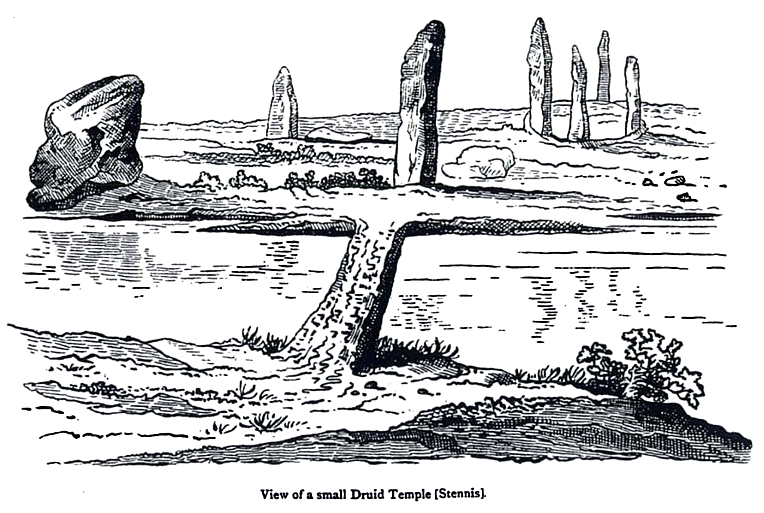
"Tours in Scotland 1747,1750,1760", p.143, Scottish History Society, Edinburgh 1887.

This is Pococke's sketch of
Stenness made in July 1760
(1).
He describes two stones standing at the south and two at the west with another
fallen there. From the exisiting
stones and the gaps, he concluded that there were eight stones in the original
circle.
The large outlying stone centre left is the Stone of Odin, a holed stone with
many associated local legends.
This stone was destroyed by Captain W. MacKay in December 1814, he also toppled
and destroyed some of
circle stones themselves. The large stone in the centre is The Watch Stone,
which still stands today.
James Cleveley
View of a semicircle of
Stones on the Banks of Stenhouse Lake in the Island of Pomona 1772.
(Pomona was a name for Orkney in those days).
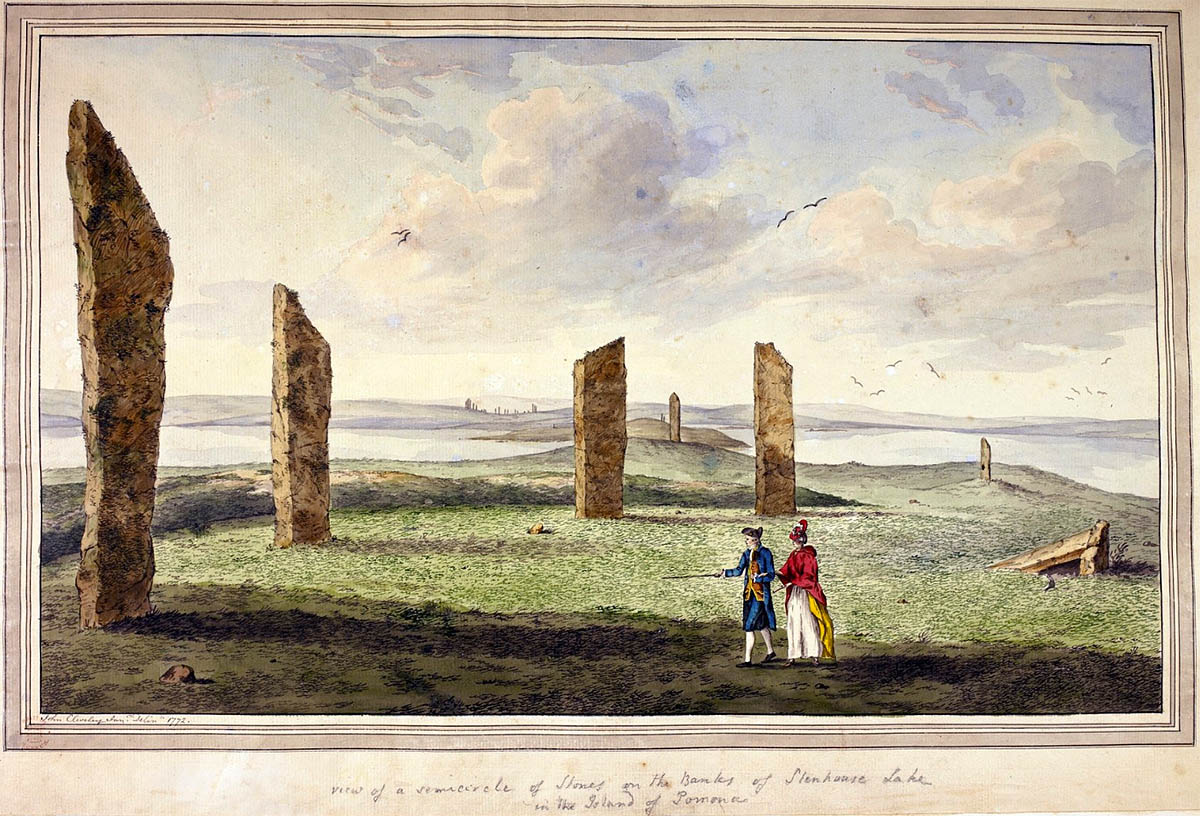
Joseph Banks stopped at
Orkney during his "Northern Journey" to the Hebrides and Iceland, accompanying
him was the artist
James Cleveley who painted the watercolour above in 1772.
The two stones left are probably stones 7 and 8, the two centre, stone 10 and,
just above the figures, the now vanished stone 11. The jumble of stones far
right
foreground is the northern stone setting which, after much later disturbance,
now looks to be in a roughly similar configuration.
The standing stone in the right distance is the Odin Stone, which was destroyed
in 1814, the hole that pierced it is just visible. The stone visible between the
two central circle stones is the Watch Stone which stands about 170m from the
circle, behind this are the two unnamed stones standing on the narrow
spit of land that almost divides the loch. In the centre distance is the
Ring of Brodgar, a stone is shown standing between this and the circle stone,
this may be a
representation of The Comet Stone which is certainly not visible from Stenness
today.
Robert Henry
A Perspective View of the Standing Stones in the Parish of Stenhouse in Orkney 1784.
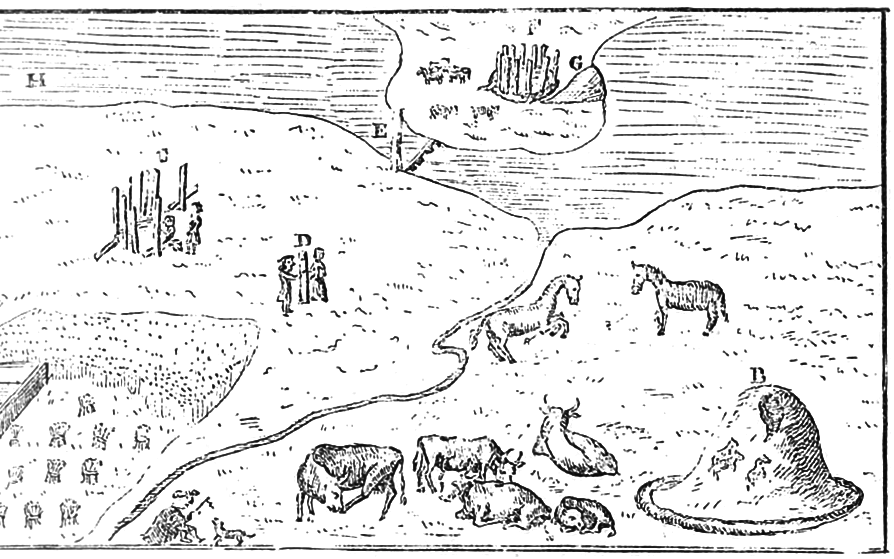
Robert Henry, a minister of
Greyfriars in Edinburgh presented this sketch to the Society of Antiquaries of
Scotland in 1784.
This is the right half of the version that was reproduced in Low's book of 1879
(2).
Stenness is shown labelled "C" on the left, "called by the inhabitants of Orkney
the Temple of the Moon". The Odin Stone is labelled "D", Henry
states it is "A stone which is supposed to have been used for tying the
sacrifice to", but his illustration shows a couple grasping hands
through the hole in the stone, which was a local betrothal ritual. Label "E"
shows the Watch Stone and "G" is the Ring of Brodgar.
"B" is thought to be Maes Howe, although Henry though it to be a mound
constructed to be an archery
target.
John Spottiswoode
The Stones of Stenness 1802.

This is an engraving
based upon a watercolour which itself was based upon a sketch made by
Spottiswoode in 1802, it appeared
in Barry's History of the Orkney islands
(3).
Stenness stands in the centre, the single stone to the left is probably a
rendition of the now-vanished Stone of Odin. The large stone
in the right foreground is the Watch Stone and Spottiswoode has got its
alignment accurately, it compares well with modern photos.
Elizabeth Leveson-Gower Countess of Sutherland
The two etchings below were made by Elizabeth Leveson-Gower in 1805, they were published in 1807 (4).
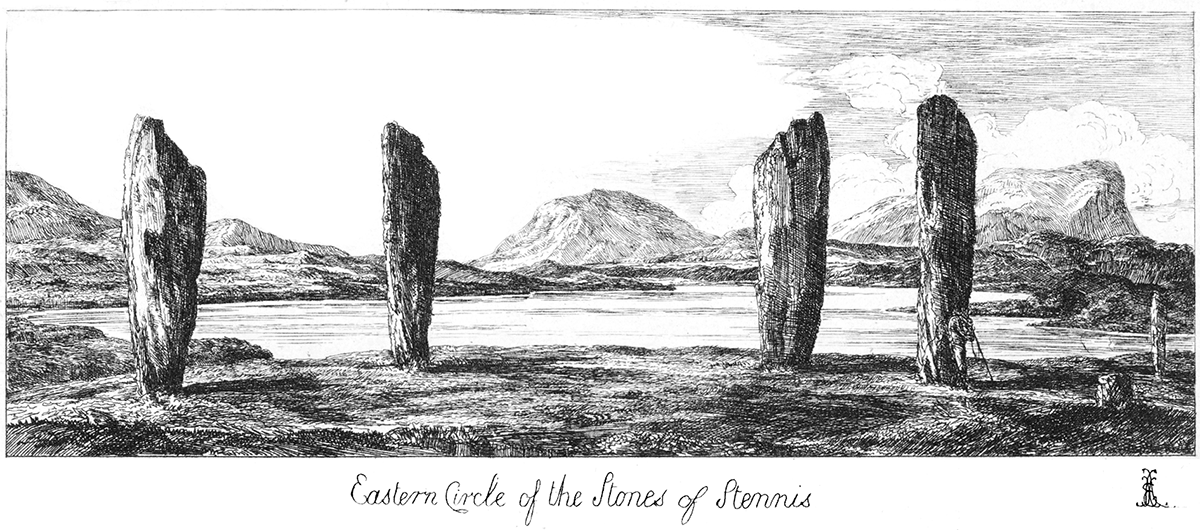
From left to right are
stones 7, 8, 10, 11 and the stump of 1. Just 9 years after this drawing was made
stones 10 and 11 would be toppled by Captain W. MacKay who would then
blast stone 11 to pieces with gunpowder. He also drilled stone 10 for
blasting but luckily he was stopped by irate local inhabitants and this stone
was later re-erected.
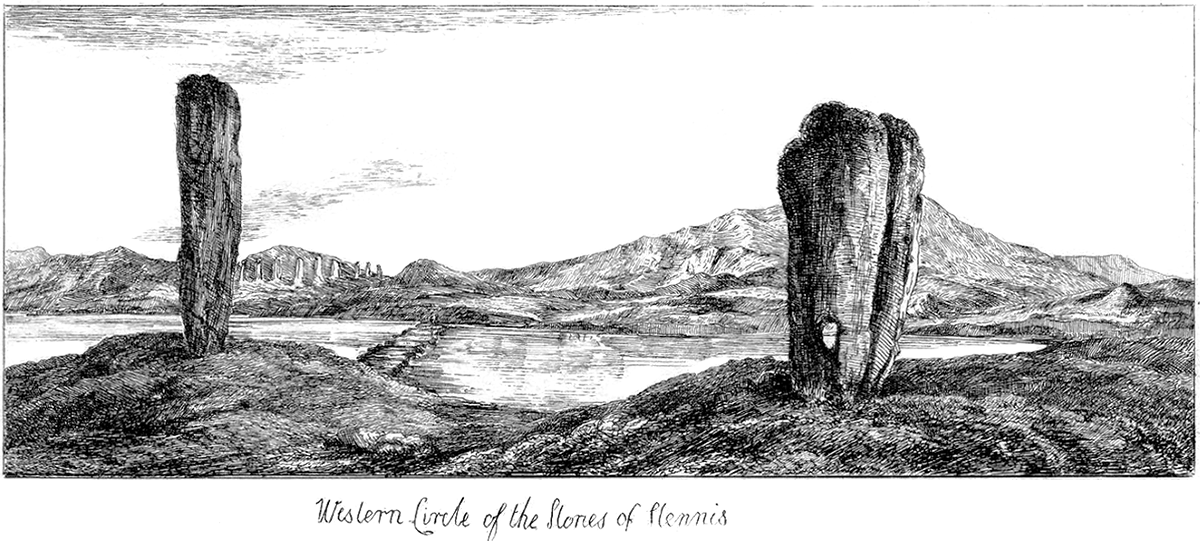
This is a view NW from Stenness, the Odin Stone stands on the right with its characteristic hole, and the Watch stone stands on the left with the Ring of Brodgar behind.
1.
Pococke, R., "Tours in Scotland
1747,1750,1760", p.102, Scottish History Society, Edinburgh, 1887.
2.
Henry, R.,
in Low, G. "A Tour through the Islands of Orkney
and Schetland in 1774" p. xxiii, Kirkwall 1879.
3.
Barry, G., "The
History of the Orkney Islands.", p.209
opp., Edinburgh,1805.
4.
Leveson-Gower, E.,"Views in Orkney and on the North-Eastern Coast of Scotland",
private publication, 1807.